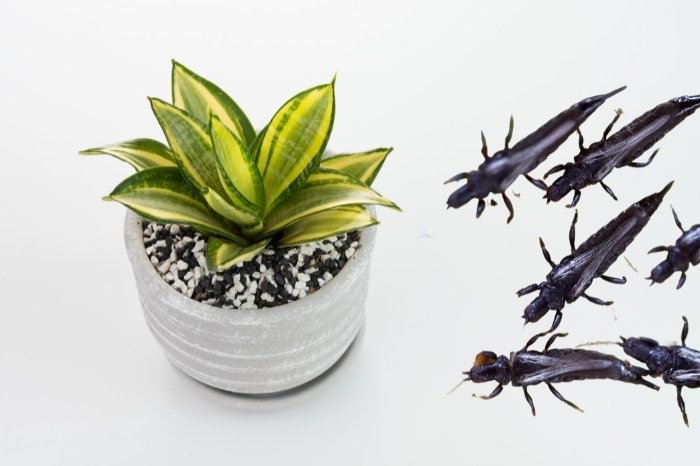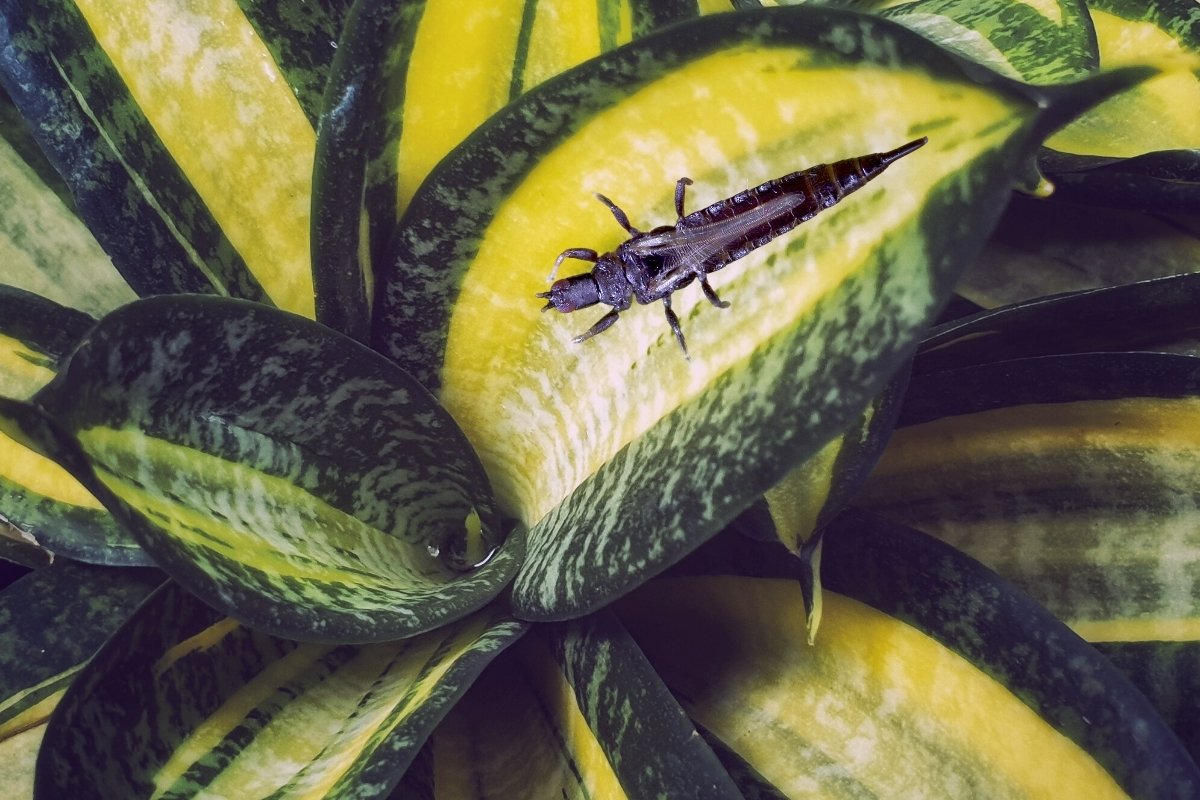Last Updated on September 14, 2022 by Griselda M.
Finding thrips on snake plants is a common issue. Thrips are an infestation on snake plants that affects the leaves, making them curl up.
Thrips are common pests that affect many plants, including snake plants. They feed on the foliage and cause leaves to curl up. Thrips are generally harmful and destructive to whatever plant they infest.
Thrips have been reported on all plant parts; including flowers, roots, stems, and leaves. Thrips have long been recognized as a major pest on a wide range of vegetables, fruit, ornamental plants, and trees. They can also be found on several weeds and woody ornamentals.
Infestation of Thrips on Snake Plant
Thrips on snake plants are common in the UK and US as well. Several different species of thrips will attack the leaves and flowers of this plant. The damage can be significant and will result in the loss of valuable produce.
The adult thrips can be seen flying around in the summer months, and you may notice them on your plants during this time. They can also be seen feeding on the underside of the leaves and flowers.
Once they have found a suitable host, they will feed and lay eggs for two to four weeks. After this, they will drop off the plant and lay their eggs on other nearby plants. They can live for up to two months in favorable conditions.

Hosts Plants For Thrips on Snake Plant
The most common host plants for thrips are those in the family Solanaceae. These include tomatoes, peppers, aubergines, eggplants, potatoes, and nightshades. Thrips can also be found in other families including Cucurbitaceae, Compositae, Lamiaceae, and Verbenaceae.
Thrips transmit diseases such as bacterial soft rot, blight, late blight, anthracnose, and powdery mildew. They are also carriers of several viruses, such as tomato spotted wilt virus, tobacco virus, potato virus Y, and tobacco rattle virus. The main way that thrips cause damage to crops is by feeding on the leaves. The feeding damages the plant by causing the leaves to wilt.
Thrips are a common pest of many vegetable crops, including eggplant, potato, pepper, and tomato. They have been shown to cause more damage to plants than other insects. Thrips can feed on almost any part of a plant, but they prefer young leaves, stems, flowers, and fruit.
Thrips are small, soft-bodied, and greenish insects with long legs and antennae. They are covered with a hard, waxy coating that protects them from water loss.
Bonide Systemic House Plant Insect Control Granules 8 oz., 0.22% Imidacloprid Insecticide
What Do Thrips Look Like?
- Thrips have six legs, three pairs of wings, and two body segments.
- The first segment is the head, which contains the mouthparts.
- The second segment is the thorax, which houses the abdominal ganglia and the heart.
- The third segment is the abdomen, which contains the reproductive organs.
- The fourth and fifth segments contain the wings.
- The sixth and last segment is the tail.
- The adult thrips are about 1 to 2 millimeters long, and the eggs are about 0.2 millimeters in diameter.
- Thrips are omnivorous and feed on many different types of plants and animals.
- They feed on the nectar of flowers, pollen, and plant sap.
- They also feed on decaying organic matter and dead insects.
- When they feed on plant sap, the thrips inject enzymes into the plant cells which break down the cell walls and allow the sugars to be absorbed by the plant.
Read more about Do Mint Plants Attract Snakes?
Thrips on Snake Plant Damage
To know that your snake plants are under a thrip attack, check the leaves. If you see that the leaves are getting brown patches – then they are under a thrip attack. The brown patches are due to the feeding activity of the thrips and it can be controlled by removing them as soon as you spot them. The best way to remove the thrips is to cut the leaf with a sharp pair of scissors.
Removing the Thrips From the Leaves
It is very easy to remove the thrips from the leaves. You just have to make a small cut in the center of the leaf and then lift out the thrips from the leaf. The thrips will fall off the leaf.
You should keep this process ongoing for some time. Once you start doing so, the number of thrips on snake plant will reduce significantly. Insecticides are also a great way to rid your plants of any insects, including thrips.
Final Remarks
It is common to notice thrips on snake plant. However, this article teaches you how to eliminate them and take care of your plant until you are thrip free. Once you manage to eliminate these destructive pests, you will enjoy growing these plants.
FAQs
How Do You Get Rid of Thrips?
There are a number of treatments available for thrips control. Thrips may be controlled by using insecticides such as pyrethroids, organophosphates, spinosad and neonicotinoids. Thrips are also susceptible to fipronil (Frontline). For more information see the EPA's list of registered products that contain fipronil.
What Do Thrips Look Like on Plants?
Thrips are small insects with long, slender bodies. They have six legs. They are very mobile and are often seen on upper leaf surfaces or on flowers. You can find thrips on your plants by looking at the leaves or flowers. The thrips are usually seen in large numbers on the undersides of leaves.
What are Thrips on Snake Plants?
The snake plant is common, and it's leaves are long and narrow. The flowers are yellow and grow in spikes at the top of the stem. The snake plant is commonly grown as an ornamental plant for its colorful flowers. Thrips are a common pest on this plant. Preventing thrips from infesting your plants can be difficult. There are several ways you can control thrips. You can spray your plants with insecticides that are labeled for thrips. You can use non-organic insecticides to treat your plants. You can also use natural insecticides, such as oil, soap, or alcohol.
Are Thrips Harmful to Plants?
Yes, thrips can cause severe damage to your plants, if left untreated.
Caroline is a gardener who loves to get down to the nitty–gritty of gardening. She proudly proclaims herself as a ‘dirt worshipper‘ and can often be found deep in the garden, covered in soil and singing to her plants. As a self–proclaimed ‘plant whisperer‘, Caroline believes that plants need love and attention just like any other living thing, and she loves to give them both. When she‘s not tending to her garden, you can often find her researching the latest gardening trends, or teaching others how to make their gardens thrive



